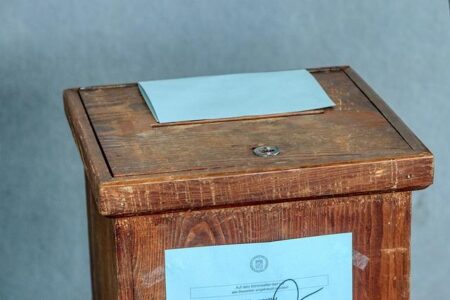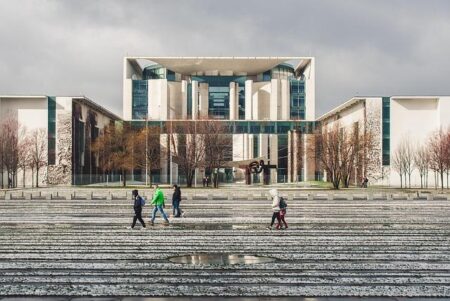An Israeli official disclosed that despite recent military operations targeting Iran’s nuclear facilities, a portion of the country’s enriched uranium stockpile has remained intact.This revelation underscores the ongoing challenges in curbing Tehran’s nuclear ambitions amid escalating regional tensions.The assessment adds a new dimension to the complex geopolitical landscape as international efforts to monitor and contain Iran’s nuclear program continue.
Iran’s Enriched Uranium Resilience Raises Regional Security Concerns
Despite a series of targeted strikes aimed at crippling Iran’s nuclear capabilities, officials from Israel have acknowledged that a portion of Iran’s enriched uranium stockpile remains intact. This development underscores the resilience of Tehran’s nuclear infrastructure,raising alarms among regional stakeholders who fear that a robust uranium reserve could advance Iran’s ability to develop nuclear weapons. The survival of these materials complicates efforts to contain nuclear proliferation and calls into question the effectiveness of current containment strategies.
Experts warn that Iran’s continued enrichment activities could embolden its political leverage in the Middle East, possibly destabilizing the already fragile security environment. Key concerns include:
- Acceleration of nuclear weapons development despite international sanctions.
- Heightened tensions
- Challenges for diplomatic negotiations aimed at curbing nuclear activities.
| Aspect | Implications |
|---|---|
| Enriched Uranium Quantity | Enough for multiple weapon cores |
| Resilience to Attacks | Increased nuclear program robustness |
| Regional Security | Elevated risk of conflict escalation |
Analysis of the Impact on Israel’s Strategic Defense Measures
Israel’s strategic defense framework is facing renewed scrutiny following revelations that some of Iran’s enriched uranium stockpiles survived recent Israeli countermeasures. This development underscores the limitations of pre-emptive strikes and the increasing sophistication of Iranian nuclear sites, prompting Israeli defense authorities to reconsider and adapt their operational doctrines. The resilience of Iran’s nuclear assets has accelerated plans to diversify intelligence-gathering methods, enhance aerial surveillance capabilities, and bolster cyber warfare tools aimed at preempting future threats before they materialize.
Key adjustments in Israel’s defense approach include:
- Expanded deployment of precision-guided munitions to minimize collateral damage and improve strike accuracy
- Integration of advanced satellite reconnaissance with real-time data analytics for faster decision-making
- Strengthened partnerships with international intelligence agencies to monitor clandestine nuclear activities
- Investment in missile defense systems capable of intercepting potential retaliatory attacks
| Defense Measure | Status | Projected Impact |
|---|---|---|
| Airborne Reconnaissance Upgrades | In Progress | Enhanced target acquisition accuracy |
| Cyber-Defense Initiatives | Accelerated Deployment | Improved disruption of opposed dialog |
| Missile Defense Fortification | Ongoing Enhancements | Increased interception rates against incoming threats |
Implications for International Nuclear Nonproliferation Efforts
The reported survival of Iran’s enriched uranium stockpile despite recent strikes poses meaningful challenges for global nonproliferation frameworks. This revelation complicates existing diplomatic efforts, as it indicates that Iranian nuclear capabilities might remain more resilient than previously assessed. It underscores the need for enhanced verification mechanisms within the International Atomic Energy Agency (IAEA) and calls into question the effectiveness of current covert operations aimed at disrupting nuclear progress. Consequently, countries engaged in nonproliferation must reconsider strategies, balancing intelligence-sharing with stronger multilateral pressure.
This development also highlights broader concerns regarding the control and monitoring of nuclear materials in volatile regions. Key implications include:
- Increased necessity for real-time surveillance: Leveraging advanced satellite and cyber intelligence to track nuclear sites.
- Challenges to enforcement of sanctions: Potential difficulties in detecting sanctioned material transfers.
- Heightened risk of nuclear proliferation: Persistence of enriched uranium emboldens proliferation networks.
- Urgency for renewed diplomatic engagement: Reinforcing dialogue and treaties to prevent escalation.
Recommendations for Diplomatic Engagement and Conflict De-escalation
In light of recent developments regarding Iran’s nuclear program, diplomatic channels must prioritize open communication and constructive dialogue to prevent further escalation. Building trust through consistent diplomatic engagement is critical. This includes:
- Reviving multilateral talks under the auspices of international bodies such as the United Nations and the International Atomic Energy Agency (IAEA).
- Implementing verification mechanisms that ensure openness around nuclear activities without compromising national sovereignty.
- Facilitating back-channel communications to reduce misunderstandings and avoid unintended confrontations.
Additionally, regional cooperation frameworks should be strengthened to create a stable security environment. The following steps can definitely help mitigate tensions:
| Key Initiative | Expected Outcome |
|---|---|
| Regional Security Dialogues | Build mutual confidence and reduce risk of conflict |
| Joint Monitoring Protocols | Increase transparency of nuclear and military activities |
| Economic Incentives | Encourage cooperation and reduce hostilities through shared interests |
The Conclusion
The revelation that some of Iran’s enriched uranium has survived recent attacks underscores the complexities and ongoing challenges in curbing Tehran’s nuclear ambitions. As tensions continue to simmer in the region,the international community remains watchful,balancing diplomatic efforts with strategic considerations. Future developments will be closely monitored, with implications for regional security and global nonproliferation efforts hanging in the balance.




